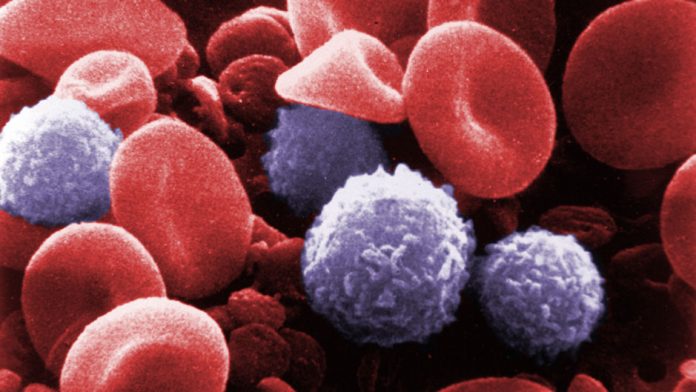As a scientist, it’s important to question everything you’re taught. Every so often, that leads to a major breakthrough in our understanding of science.
Earlier this month, Prof. John Dick at the University of Toronto, published new work on blood stem cells in the journal Science, and if it can be replicated, it will be time to re-write the textbook definition of how blood is made.
The textbook description of blood cell development is a branched hierarchy
Since the 1960s, it has been well established that all blood cells, from the red blood cells that carry oxygen, to the white blood cells that make up the immune system, are the descendants of a master blood stem cell (also known as a hematopoietic stem cell). However, to become these mature cell types, convention has it that these cells develop gradually, with many intermediate cell types developing along a branched hierarchy. Prof. Dick’s new findings suggest that this hierarchy may not exist at all.

Textbooks describe blood cell development as a progression through a branching hierarchy Credit: OpenStax College/CC by 3.0
Mature blood cell types may actually develop directly from blood stem cells
In 2011, Prof. Dick’s group was also the first to isolate a single blood stem cell, capable of generating every mature blood cell type. In studying this master cell, Prof. Dick found that mature cells broke off almost immediately from the stem cell instead of developing gradually.
Prof. John Dick talks about his discovery on blood cell development Video courtesy of UHN Toronto
Blood cell development has implications for blood cell diseases from anemia to childhood leukemia
Blood cells are some of the most rapidly dividing cells in the body, with over 300 billion cells being replaced every day. The robust study looked at samples of over 3,000 human blood cells from 33 different people of varying ages, including children, and the umbilical cord blood of newborns.
The findings suggest that the blood stem cell is the executive decision-maker when it comes to replacing blood cells. This has important implications for personalized medicine, regenerative medicine, and tissue engineering.
It may help scientists better explain the causes of childhood blood cancers like leukemia. It may help tissue engineers make personalized platelets for thousands of cancer patients, which can’t be stored or frozen, and can currently only be obtained through blood donation.
The study also helps researchers better understand how blood cell development changes as people age.
Want to learn more about Prof. Dick’s collaborator and fellow stem cell scientist Prof. Gordon Keller? Watch his Orange Chair Interview here.








































